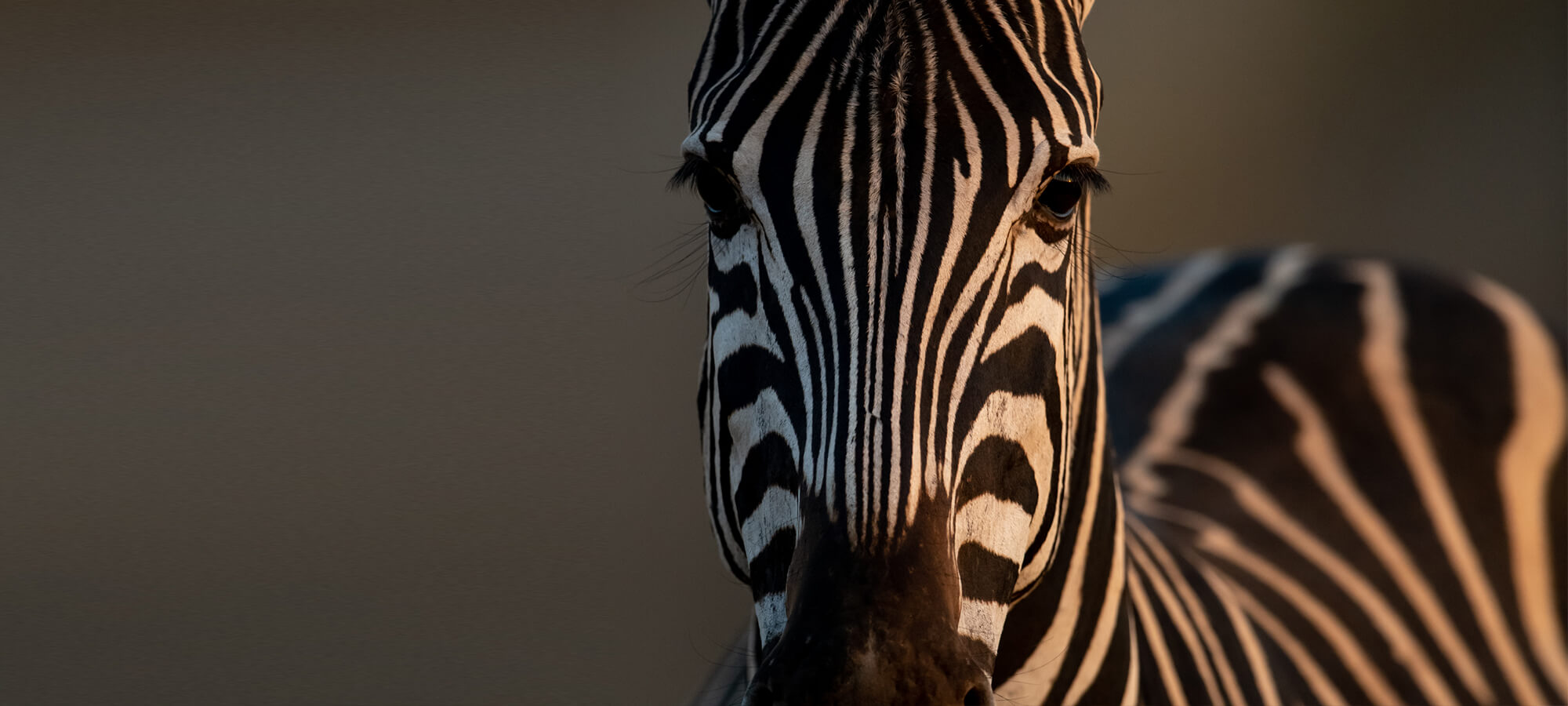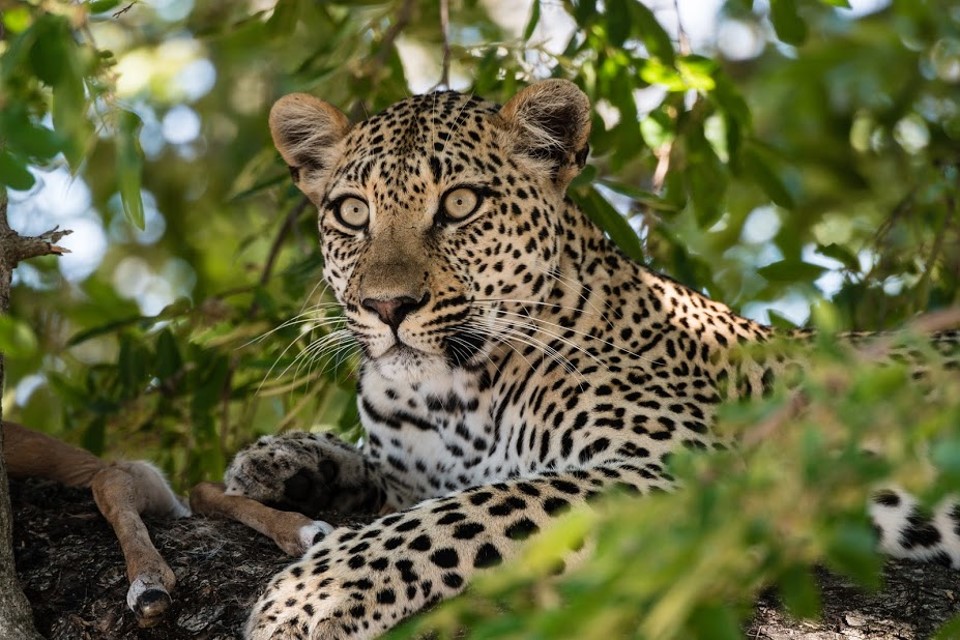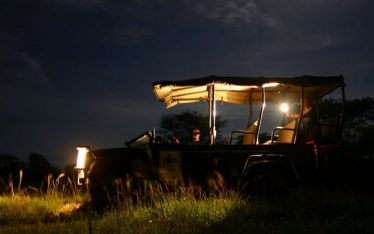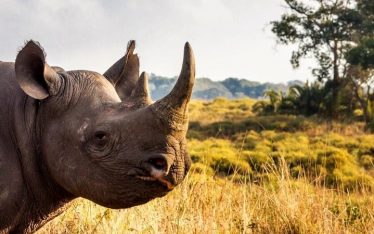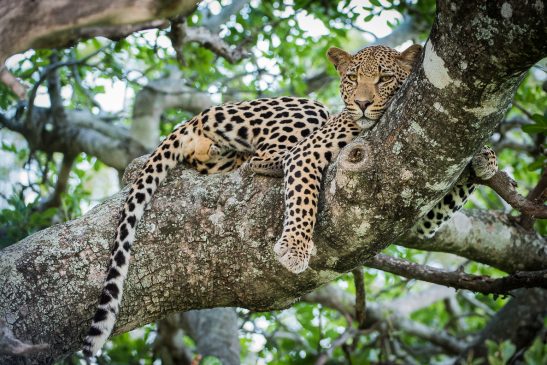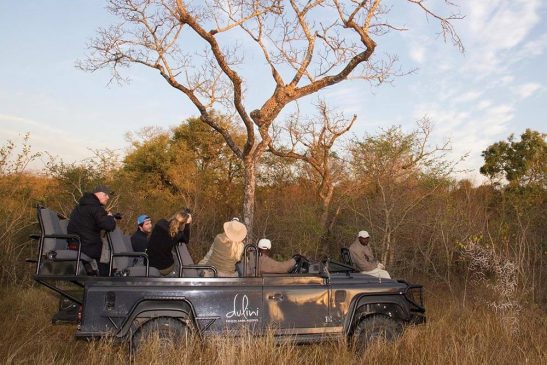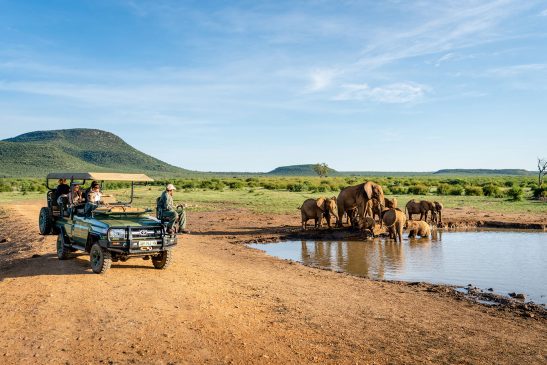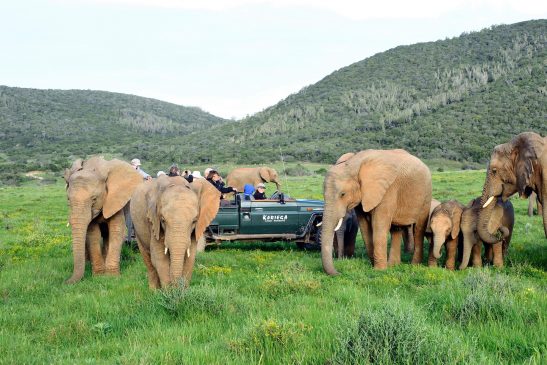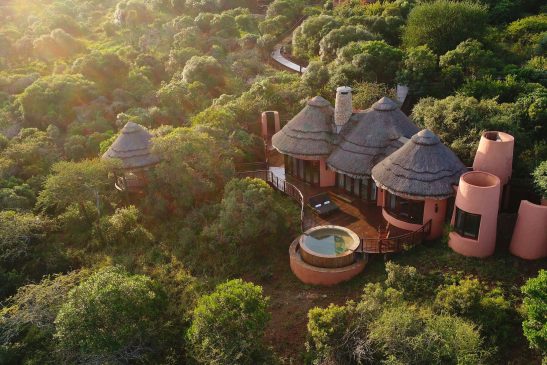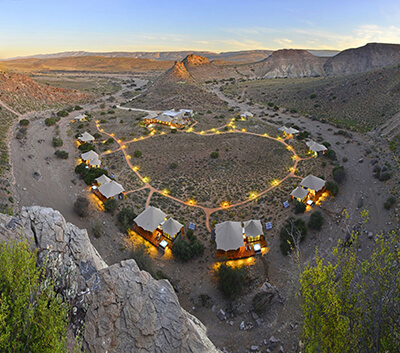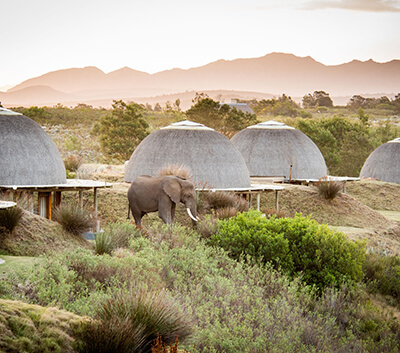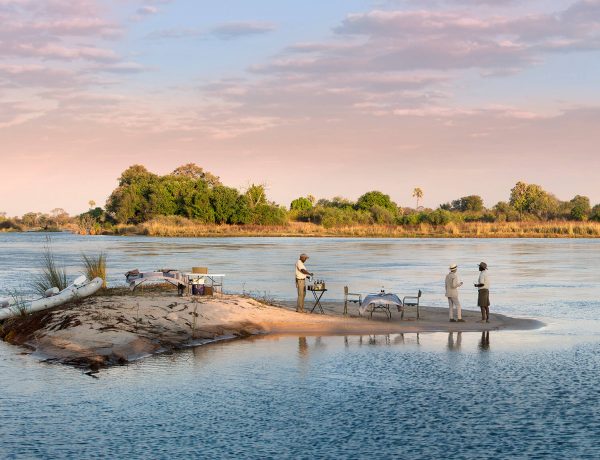What makes the Sabi Sands an exceptional safari destination is its year-round appeal. Divided into distinct dry and wet seasons, each offers unique landscapes and wildlife encounters, catering to different preferences. Although an all year round safari destination, the dry season from May to October has been dubbed the best time to go to the Sabi Sands. Below is a summary of the different seasons as well as a month to month guide to help plan a safari in the Sabi Sands Game Reserve.
Sabi Sands Dry Season (winter)
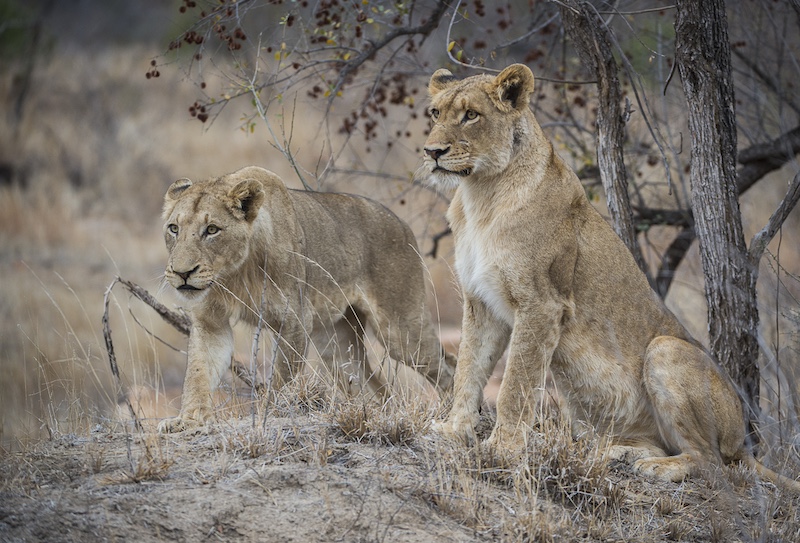
During the winter, from June to September the early morning and late evening temperatures fall well below 10˚C (50˚F) but warm up to the mid-twenties (73˚F) by the afternoon. With virtually no rainfall during this time, the days are dry and the vegetation is sparse. The sparse vegetation makes it easier to spot animals and game viewing is at its best. Animals are also forced to congregate around the water sources such as waterholes and rivers, making it a good opportunity for wildlife sightings.
- Cold mornings and evenings, pleasantly warm days
- Sparse vegetation
- Favourable time of for wildlife sightings
Sabi Sands Wet Season (summer)

Summers fall between November and February, and in the Sabi Sands, this is also the wet season. Peak summer temperatures can reach up to 40˚C (104˚F) with a slight respite from the heat with almost daily afternoon thundershowers. This is also the time in which green vegetation flourishes, making for beautiful landscape and wildlife photography.
- Hot and humid
- Daily afternoon thundershowers
- Beautiful lush vegetation
- Excellent time to combine with a Cape Town holiday
Shoulder Season
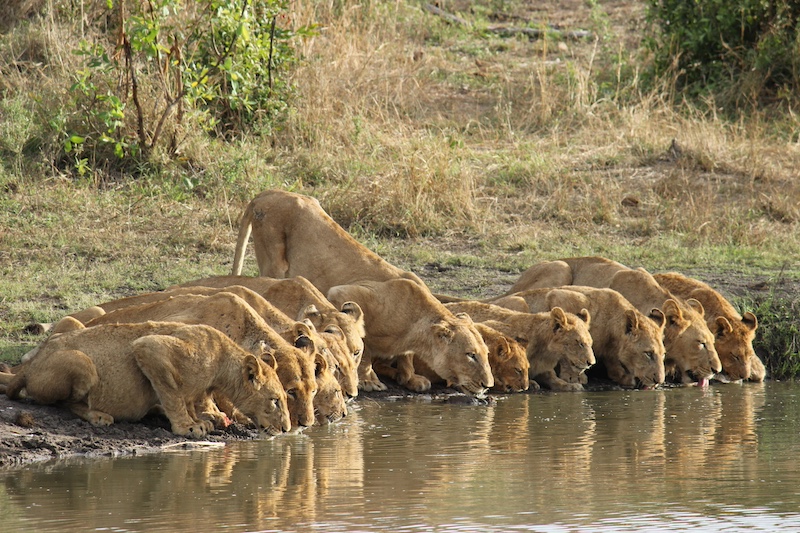
Shoulder season, spring (March and April) and autumn (October and November) are excellent times to visit Sabi Sands. Although in the months of spring, the landscapes are still flourished in the lush green vegetation, the days start to cool and the rainfall is slowly decreasing. Many safari enthusiasts argue that October and November are the best months and refer these months as the best of both worlds. Along with superb weather, October and November is birthing season in the Sabi Sands. It is also the time when the birds flock in for their natural migration.
- Favourable weather
- Mainly dry days with the possibility of showers in the afternoons
- Birthing season
- Excellent time to combine with a Cape Town holiday
January in the Sabi Sands Game Reserve
January marks the peak of the rainy season, it is hot and humid and this month invites occasional thunderstorms and some heavy downpours (periodically). While the warmth can be intense, it fosters lush greenery and beautiful scenery in the Sabi Sands. Despite the humidity and occasional rainfall, January is a preferred time to visit the Sabi Sands when combining a holiday to Cape Town.
Weather: Anticipate an average daily temperature ranging between 20°C and 33°C, coupled with high humidity levels. Prepare for sporadic thunderstorms and brief yet intense downpours throughout the day.
Tip: Prioritize packing lightweight, breathable attire and ample sunscreen to shield yourself from the sun’s rays. Given the frequent occurrence of afternoon thunderstorms, consider bringing along a raincoat or umbrella for added protection.
February in the Sabi Sands Game Reserve
February is in the peak of the Summer in the Sabi Sands and continues the warm, wet trend, with frequent thunderstorms and flourishing vegetation. Although the humidity rises, the rejuvenated landscape promises picturesque views. February is a preferred month to time to visit the Sabi Sands when combining a holiday to Cape Town.
Weather: Anticipate a daily temperature range of 20°C to 32°C with elevated humidity levels. Prepare for sporadic thunderstorms and brief yet intense rainfall episodes during the day.
Tip: Pack lightweight, breathable attire and ample sunscreen for sun protection. Given the likelihood of afternoon thunderstorms, carrying a raincoat or umbrella is advisable.
March in the Sabi Sands Game Reserve
By March, the rainy season wanes, giving way to warm, humid days and occasional thundershowers. The park’s beauty peaks with thick, verdant vegetation and it really is a beautiful sight to take in. Although wildlife spotting may be challenging due to the thick vegetation after the summer rains, the guides and trackers use their skills and provide world class game drives with excellent wildlife sightings.
Weather: Expect an average daily temperature ranging from 20°C to 31°C with elevated humidity levels. Anticipate occasional thunderstorms and brief yet intense downpours throughout the day.
Tip: Pack lightweight, breathable clothing and ample sunscreen for sun protection. Given the likelihood of afternoon thunderstorms, carrying a raincoat or umbrella is recommended.
April in the Sabi Sands Game Reserve
April heralds autumn, offering pleasant temperatures for exploration. As the rainy season concludes, occasional afternoon showers nourish the still-green landscape, providing an excellent backdrop for wildlife observation. April is a popular time of year in the Sabi Sands Game Reserve due to the The changing of the seasons, as well as the easter Holidays. April is also a great time of year to time to visit the Sabi Sands when combining a holiday to Cape Town.
Weather: Prepare for an average daily temperature ranging from 17°C to 29°C with high humidity. Although the rain starts to disappear, you can still anticipate occasional thunderstorms and brief yet heavy downpours throughout the day.
Tip: With the changing of seasons comes unpredictable weather. It’s wise to pack warm clothing for cooler mornings and evenings.
May in the Sabi Sands Game Reserve
May is an excellent time to visit the Sabi Sand Game Reserve and signals the start of the dry season, with warm days and cooler evenings. The diminishing vegetation facilitates wildlife sightings, making it an optimal time for safari adventures. May is one of the warmest moths of the dry season in the Sabi Sands, this makes it a popular time to visit.
Weather: Anticipate an average daily temperature range of 12°C to 28°C with high humidity. Expect warm days and cold mornings.
Tip: Keep in mind that early mornings and evenings, prime times for game drives, can be quite chilly, with temperatures dropping to around 10°C or lower. Be sure to pack warm layers to stay comfortable during these times.
June in the Sabi Sands Game Reserve
June is another month of the Sabi Sands, but brings cooler temperatures, particularly in the mornings and evenings. Dry conditions prevail, enhancing wildlife visibility around water sources. June a an excellent to go on safari in the Sabi Sands, it is however a busy month due to South Africa’s school holidays.
Weather: Plan for average daily temperatures ranging from 9°C to 25°C with high humidity. The early mornings and evening can get particularly cold, however it does warm up throughout the day.
Tip: Keep in mind that early mornings and evenings, ideal for game drives, can be quite chilly, with temperatures dropping to around 10°C or lower. Ensure to pack warm layers to stay cozy during these times.
July in the Sabi Sands Game Reserve
July maintains dry conditions, with wildlife congregating around water sources for easier viewing. Although mornings and evenings are chilly, game drives offer excellent wildlife encounters. July is in the dry season and is one of the best months to visit the Sabi Sands.
Weather: Average daily temperatures from 09°C – 25°C and high humidity. The early mornings and evening can get particularly cold, however it does warm up throughout the day.
Tip: Early mornings and evenings can be quite chilly and this is when the game drives take place. Temperatures can drop to around 10°C or lower, so make sure to bring some warm layers for these times.
August in the Sabi Sands Game Reserve
August marks the peak of the dry season, boasting clear skies and sparse vegetation. Wildlife congregates around water sources, offering prime viewing opportunities amidst low mosquito activity. Along with the other months in the dry season, August has been dubbed the best time to go on safari in the Sabi Sands Game Reserve. Booking far in advance is essential and you can expect most lodges to be fully booked over this period.
Weather: Expect average daily temperatures ranging from 11°C to 27°C with high humidity. The early mornings and evening can get particularly cold, however in August it does warm up throughout the day in the Sabi Sands.
Tip: Keep in mind that early mornings and evenings, prime times for game drives, can be quite chilly. Temperatures may drop to around 10°C or lower, so be sure to pack warm layers to stay comfortable during these times.
September in the Sabi Sands Game Reserve
September signifies the onset of spring, with warmer temperatures and sparse vegetation attracting abundant wildlife. September is a brilliant time to visit the Sabi Sands for a safari. It is one of the warmest moths of the dry season, this makes it a popular time to visit. September marks the end of dry season in the Sabi Sands. Therefore the vegetation being at its sparsest, it is a favourable time to see wildlife and sighting are at its best.
Weather: Anticipate average daily temperatures ranging from 14°C to 29°C with high humidity. Expect dry days with the possibility of signs of the first summer rains.
Tip: With the changing of seasons comes an unpredictable weather pattern. It’s wise to pack warm clothing for the cooler mornings and evenings to ensure your comfort.
October in the Sabi Sands Game Reserve
October in the Sabi Sands ushers in warmer days, ideal for outdoor activities and relaxation. The mornings start to warm up and the days get longer. The real highlight in October is that the birthing season begins and it is time for the young to join the world. Exceptional wildlife sightings are abundant around water sources, making it a prime time for safaris. Birthing season also attracts a lot of action in the bush, animals are actively hunting and protecting their young.
Weather: Expect average daily temperatures ranging from 17°C to 30°C with high humidity. Expect dry days with the possibly of occasional summer rains.
Tip: While generally dry, there may be occasional light rain showers in the afternoon. It’s advisable to pack warm clothing for the cooler mornings and evenings to stay comfortable.
November in the Sabi Sands Game Reserve
November offers warm, dry weather, perfect for game viewing amid less dense vegetation. Though occasional thunderstorms may occur, they add to the park’s allure. Along with October, November is birthing season in the Sabi Sands and it is certainly a highlight of the year. All in all November is an excellent time to go on safari in the Sabi Sands Game Reserve.
Weather: Anticipate average daily temperatures ranging from 19°C to 31°C with high humidity. Expect occasional thunderstorms and brief yet heavy downpours throughout the day.
Tip: Pack light, breathable clothing and ample sunscreen for sun protection. Given the common occurrence of afternoon thunderstorms, it’s advisable to carry a raincoat or umbrella.
December in the Sabi Sands Game Reserve
December heralds the hot, wet season, with temperatures soaring and afternoon thundershowers common. Despite the crowds, visiting during this vibrant period promises a memorable safari experience. Peak/festive season runs from approximately the 20th December – 10 January each year. During this period booking in advance is essential, accommodation prices increase and and there is limited availability at all of the best lodges.
Weather: Anticipate average daily temperatures ranging from 20°C to 26°C with high humidity. Expect occasional thunderstorms and brief yet heavy downpours throughout the day.
Tip: Pack light, breathable clothing and ample sunscreen for sun protection. Since afternoon thunderstorms are common, it’s wise to bring along a raincoat or umbrella for added comfort and protection.
Useful Information
If you are planning a safari in the Sabi Sands, we recommend reading these articles to find out more about the Sabi Sands and the best places to stay.
- Top 10 Ultra Luxurious Lodges in the Sabi Sands
- Best Family Lodges in the Sabi Sands
- View all Sabi Sands lodges
- View all Sabi Sands holiday packages
For personal planning assistance and advice contact out team.
